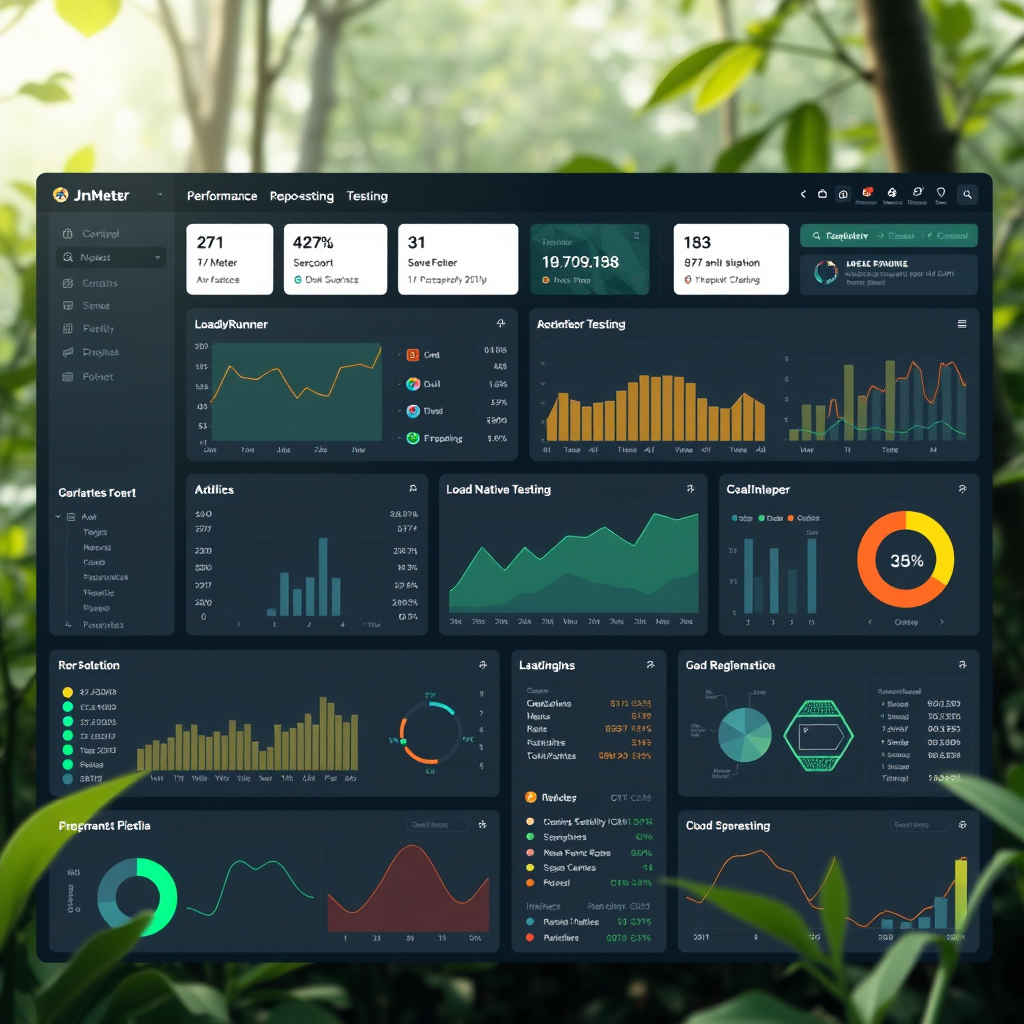
The fourth quarter of 2024 has brought significant updates to the performance testing landscape, with major releases from industry-leading frameworks that promise to revolutionize how we approach performance simulator implementations and UI stress test methodologies.
JMeter 5.6: Enhanced Cloud-Native Capabilities
Apache JMeter 5.6 introduces groundbreaking features specifically designed for modern cloud-native applications. The new release includes advanced performance simulator capabilities that allow developers to create more realistic testing scenarios for distributed systems.
Key improvements include enhanced Kubernetes integration, allowing seamless deployment of JMeter test plans across containerized environments. The updated GUI now features a dark theme that aligns with modern development environments, making it easier for teams to integrate performance testing into their daily workflows.
Notable JMeter 5.6 Features:
- Native Docker container support for distributed testing
- Improved WebSocket and HTTP/2 protocol handling
- Enhanced real-time monitoring dashboard
- Advanced correlation engine for dynamic content
- Integrated performance metrics export to popular monitoring tools
LoadRunner Professional 2024: Enterprise-Grade Innovation
Micro Focus has unveiled LoadRunner Professional 2024, setting new standards for enterprise performance testing. This release focuses heavily on AI-driven test optimization and enhanced integration with modern DevOps pipelines, making it an ideal choice for organizations implementing comprehensive UI stress test strategies.
The new version introduces intelligent workload modeling that automatically adjusts test parameters based on real-world usage patterns. This feature significantly reduces the time required to create realistic performance scenarios while improving the accuracy of test results.

AI-Powered Testing Features:
- Predictive load pattern analysis
- Automated bottleneck detection
- Smart resource allocation
- Machine learning-based result interpretation
Gatling 3.10: Developer-Centric Performance Testing
Gatling 3.10 continues to lead the way in developer-friendly performance testing tools. This release emphasizes code-as-configuration approaches and seamless integration with modern development workflows, making it particularly valuable for teams working with logic modules and complex application architectures.
The new version introduces enhanced Scala DSL capabilities and improved Java API support, allowing developers to create more sophisticated test scenarios with minimal code complexity. The updated reporting engine now provides deeper insights into application behavior under various load conditions.
Gatling 3.10 Code Example:
val httpProtocol = http
.baseUrl("https://api.example.com")
.header("Content-Type", "application/json")
.check(status.is(200))
val scn = scenario("Performance Simulator Test")
.exec(http("Load Test Endpoint")
.post("/api/stress-test")
.body(StringBody("""{"modules": ["ui", "logic"]}"""))
)
setUp(scn.inject(rampUsers(100) during (60 seconds)))CI/CD Pipeline Integration Improvements
All three frameworks have significantly improved their CI/CD integration capabilities. These enhancements make it easier to implement continuous performance testing as part of the development lifecycle, ensuring that performance regressions are caught early in the development process.
The new integration features support popular platforms including Jenkins, GitLab CI, GitHub Actions, and Azure DevOps. Teams can now automatically trigger performance tests based on code commits, pull requests, or scheduled intervals, with results automatically integrated into existing reporting dashboards.
Automated Testing
Trigger performance tests automatically on code changes
Real-time Reporting
Instant feedback on performance metrics and trends
Quality Gates
Prevent deployments when performance thresholds are exceeded
Impact on Modern Development Workflows
These framework updates represent a significant shift toward more integrated, intelligent performance testing approaches. The emphasis on cloud-native support, AI-driven optimization, and seamless CI/CD integration reflects the evolving needs of modern development teams working with complex, distributed systems.
For organizations implementing performance simulator solutions and comprehensive UI stress test strategies, these updates provide the tools necessary to maintain high-quality user experiences while scaling applications to meet growing demands. The improved logic modules support in all three frameworks enables more sophisticated testing scenarios that better reflect real-world usage patterns.
Key Takeaway
The Q4 2024 updates to JMeter, LoadRunner Professional, and Gatling mark a new era in performance testing, with enhanced cloud-native capabilities, AI-driven optimization, and improved CI/CD integration making it easier than ever to implement comprehensive performance testing strategies in modern development workflows.
Looking Ahead: Future Developments
As we move into 2025, these framework updates lay the groundwork for even more advanced performance testing capabilities. The focus on AI integration, cloud-native support, and developer experience improvements suggests that performance testing will become increasingly automated and intelligent.
Teams looking to stay ahead of the curve should begin evaluating these new features and planning their migration strategies. The enhanced capabilities for performance simulator implementations and UI stress test methodologies will be crucial for maintaining competitive advantage in an increasingly performance-conscious market.